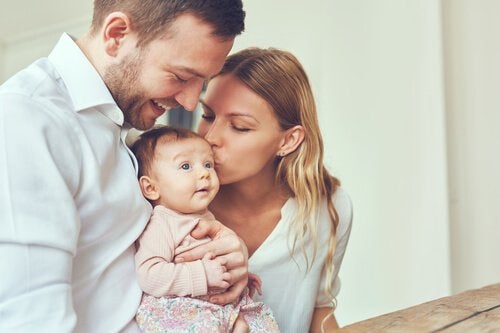Parenting is not an easy task. We need to be aware of the many factors that influence children’s education, but what about the factors we can’t control?Those who are part of us and influence the parental-filial bond?What is the impact of adult attachment on parenthood and family climate??
We are born and need ourselves, like insects attracted by light, we need emotional, stable and intense bonds, that is why we are considered biopsychosocial beings, being social interaction a fundamental factor in cognitive and emotional development.
- “Children’s behavior is a reflection of adult behavior.
- Think about what keeps you loved and get ready to let him go.
- Will you be a wonderful example to your children?.
- ? Louise Hay?.
Thanks to researchers such as John Bowbly, Peter Fonagy and Mary Ainsworth, we are now aware of the importance of attachment in our development, for example, we know that the attachment model adopted in childhood represents a brand, an internal model or a relational map This will guide us as a star throughout the emotional journey of our lives, conditioning, in many cases , the kind of relationships we will seek, have and maintain.
But not only that; Thanks to the persistence of these researches and an intense study of the most coherent theoretical construction of the emotional field, we can say that the relational maps that shape us are formed from life experiences or new figures of attachment over time. talking about adult attachment.
“Do adults adopt characteristic attachment styles in the context of emotional situations?Cindy Hazan and Phillp Shaver?
According to Bartholomew, a Canadian psychologist, adult attachment patterns are polarized between the negative and the positive, in this way negative attachment models are defined as those who maintain the belief that the other rejects them, is distant or does not care.
On the contrary, positive models are defined as those that consider the other to be available and interested, from this classification arise different forms of adult attachment:
As we have said, attachment directly affects how we relate, so it is not strange that adult attachment influences not only our relationship, but also the relationship established with children and the family environment.
Some studies suggest that mothers with a sure attachment model respond adequately to the expression and experience of positive and negative experiences, in this way they help their child in this emotional experience and in their verbalization, certainly a positive point for emotional development. of the future adult, facilitating future identification and emotional management, as well as self-control.
So, as if it were a rule of three, a sensitive maternal figure who generates a bond of secure attachment would also provide the basis for good emotional development How does this emotional intelligence help us?Having a foot is very important: it allows us to keep stress levels at bay, facilitates the interpretation of emotions, as well as the acceptance of negative emotions and the reinforcement of positive ones.
As a result, a secure attachment, both paternal and maternal, allows a flexible and cohesive family climate, in this way they help the family adapt to our structures, resolve conflicts and generate intimacy.
“Sensitivity raises a barrier that intelligence cannot overcome. “Azorín?
On the other hand, avoidative or insecure attachment is, in many cases, a true ballast for the adult who has begun to relate to those around him, people with an avoidative or insecure attachment have a latent desire for intimacy. The image of themselves and others generates enough mistrust, fear and rigidity not to let this connection develop.
People with this pattern of attachment, without ill intentions, feel ambivalent about how they relate to their children. They also feel the desire to approach and discomfort alternately. This can lead to levels of discomfort from not being able to feel free on an emotional level, thus increasing anxiety about the double message itself.
Thus, the family environment with parents with this model of attachment is one of little cohesion, with low levels of emotional expression, little organization, greater control and with the possibility of frequent conflicts, resulting from avoiding adult attachment, being a stumbling block to the development of emotional intelligence, which facilitates factors such as overprotection or poor care of children.
In conclusion, the discovery of the term? It allows us to live more informed about the importance of what we pass on to younger generations. The legacy of our parents’ attachment is a clearly influential factor in the education of children and, in many cases, also in their future. Remember: safe attachment is one of the best gifts we can offer to new generations.

